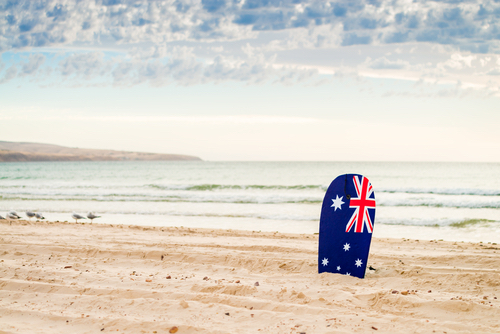


Now that summer is here, visiting the beach to cool off is a must. However, it is also a timely reminder to stay safe this summer. There are many safety risks you can encounter at the beach, including drowning, sun exposure, or coming into contact with dangerous wildlife. Here are four things to remember about beach safety before your next trip.
What the lifeguard flags mean
For many beachgoers, the red and yellow flags are instantly recognisable. However, there are several flags that are used by lifeguards to help keep swimmers safe. So, what are they and what do they mean?
- Red and yellow: the most recognisable flag – a set of red and yellow flags is used to indicate the area of ocean that is being patrolled by lifeguards. You should only ever swim between these flags to reduce your risk of drowning.
- Red: a red flag indicates the beach is closed. Never enter the water at a closed beach.
- Yellow: a yellow flag indicates potentially hazardous water. This may include rough surf or rip currents.
- Black and white: the chequered black and white flag indicates surfing or other board riding activity is not permitted within the area.
- Red and white: the chequered red and white flag requires an evacuation of the water.
What the safety signs mean
In addition to the flags, other signs may be used at a beach to give instruction or indicate hazards. There are four kinds of signs to look out for. Here’s what they mean:
- Warning signs: these are yellow and black diamond-shaped signs used for hazard warnings including dangerous seas, stingers, sharks, crocodiles, and deep or shallow water.
- Regulatory signs: these are circular signs with a red border and diagonal line over a black and white graphic. These indicate activities that are prohibited on the beach including swimming, surfing, having glass or alcohol, and bringing pets or vehicles onto the beach.
- Information signs: these blue and white square signs are used to notify beachgoers of important information such as frequent watercraft activity, or that a beach is patrolled.
- Safety signs: green and white safety signs indicate the location of safety equipment and services including defibrillators, first aid kits, or emergency telephones.
How to get the attention of a lifeguard
While swimming between the flags is your safest option when going to the beach, it does not guarantee a lifeguard will spot you when you are struggling. If you are having trouble in the water, your arm above your head while you call out for help.
How to identify rip currents and what to do if you get caught in one
Rip currents are a significant danger at the beach. The easiest way to avoid swimming in a rip current is to swim between the red and yellow flags. However, if you decide to swim in an unpatrolled area, survey the water first and look out for:
- Deep, dark coloured water
- Little to no breaking waves
- Rippled water surrounded by smooth, flat water
- Objects or frothy, sandy, dirty looking water flowing out to sea.
Be sure to take the time to learn these safety tips before your next beach trip. Always follow the advice lifeguards and feel confident in your ability to stay safe before entering the water.
To find out more, have a look at these resources:




